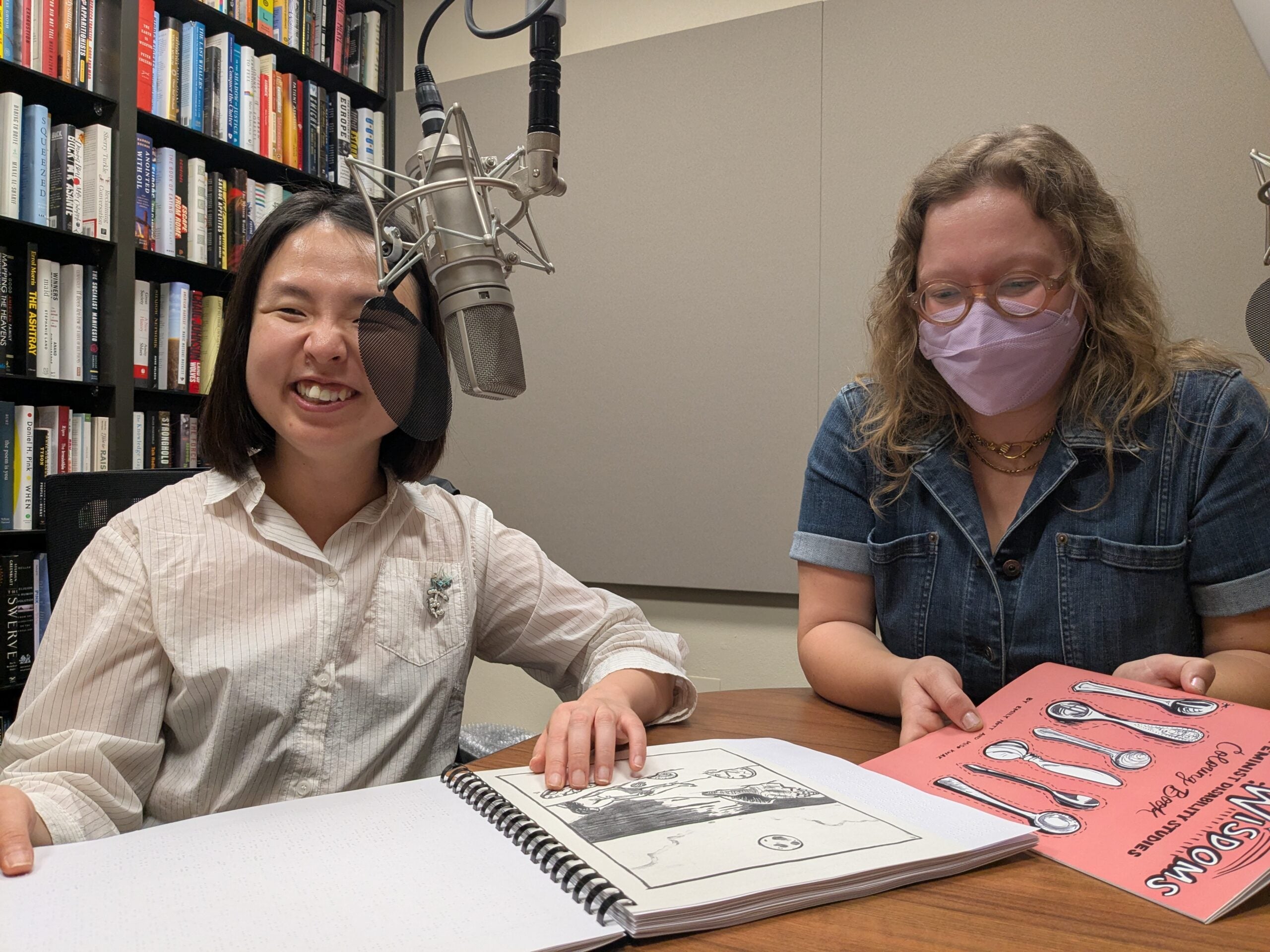The filmmaker David Lynch — who died in January at 78 — was often reluctant to tell viewers what to make of his work.
Lynch was best known for his edgy, surreal movies and TV shows, including “Blue Velvet,” “Mulholland Drive,” and “Twin Peaks.” He was also a visual artist, and he created several pieces at Tandem Press in Madison over several years as a visiting artist.
Jason Ruhl, a collaborative printmaker at Tandem, sees a through line to Lynch’s film work, paintings, sculpture, drawings and photography. In all of his work, first impressions often crumble and understanding can evolve.
News with a little more humanity
WPR’s “Wisconsin Today” newsletter keeps you connected to the state you love without feeling overwhelmed. No paywall. No agenda. No corporate filter.
“If you sit with it, it makes you think and maybe pivot on that idea of what it is,” Ruhl told WPR’s “Wisconsin Today.”
Katie Geha, the director of Tandem Press, agreed.
“Some of the best art doesn’t tell you what it means, but instead prompts you to think deeply about what it means for you,” she said. “I was just listening to [a David Lynch interview] the other day, from a long time ago on ‘Fresh Air.’ Terry Gross is really trying to get him to explain his films. And he’s constantly dodging that question because he doesn’t want it to be pinned down. There is an openness to your own interpretation that I believe he really encourages.”
Lynch spent time in Madison because his former wife, Mary Sweeney, was a Madison native. A writer, director and producer, Sweeney collaborated with Lynch on several of his movies. While living in Madison, Lynch connected with Tandem Press, a printmaking studio and gallery that is affiliated with the art department within the School of Education at the University of Wisconsin-Madison.
Lynch was first an artist-in-residence at Tandem in 1997, and he continued to collaborate with the Press in subsequent years, including on a series of nude photogravure prints that were made during the COVID-19 pandemic.
Geha shared images from some of the art Lynch made with Tandem along with some commentary about them.


Katie Geha: In these early works you can see that Lynch is experimenting with the printing process, playing around with what images he might be able to capture. “Untitled (Figure 2)” is an eerie work that recalls his film “The Elephant Man.”

KG: This work details his famed “Chicken” monoprints. Lynch often worked with our Dake hydraulic press to create outlandish and experimental works. In this case he asked for chicken heads and after calling around town to several butchers in town, Tandem procured heads which were then used in the heavy duty press. The rust-colored imprinted paper was not created with ink but, rather, blood.


KG: Lynch often worked in photogravure, a process for printing photographs in ink. The result is often cinematic in nature, allowing for the play of light and dark. In his most recent work with Tandem from 2021, he created a series of photogravures that represents his first use of image manipulation software to alter source images, borrowed with permission in these 12 prints, deformed nude figures contort, bend, reach and pose within strange environments that, while mostly unclearly defined, appear to be domestic spaces. The images each sink into a deep velvety black square. This format, slightly reminiscent of film but exaggerated as if to suggest a peep show, aligns the prints with Lynch’s cinematic work and lends a voyeuristic edge to the viewer’s relationship to the images from “1000 Nudes: A History of Erotic Photography from 1839-1939, Uwe Scheid Collection” (Taschen, in print).






